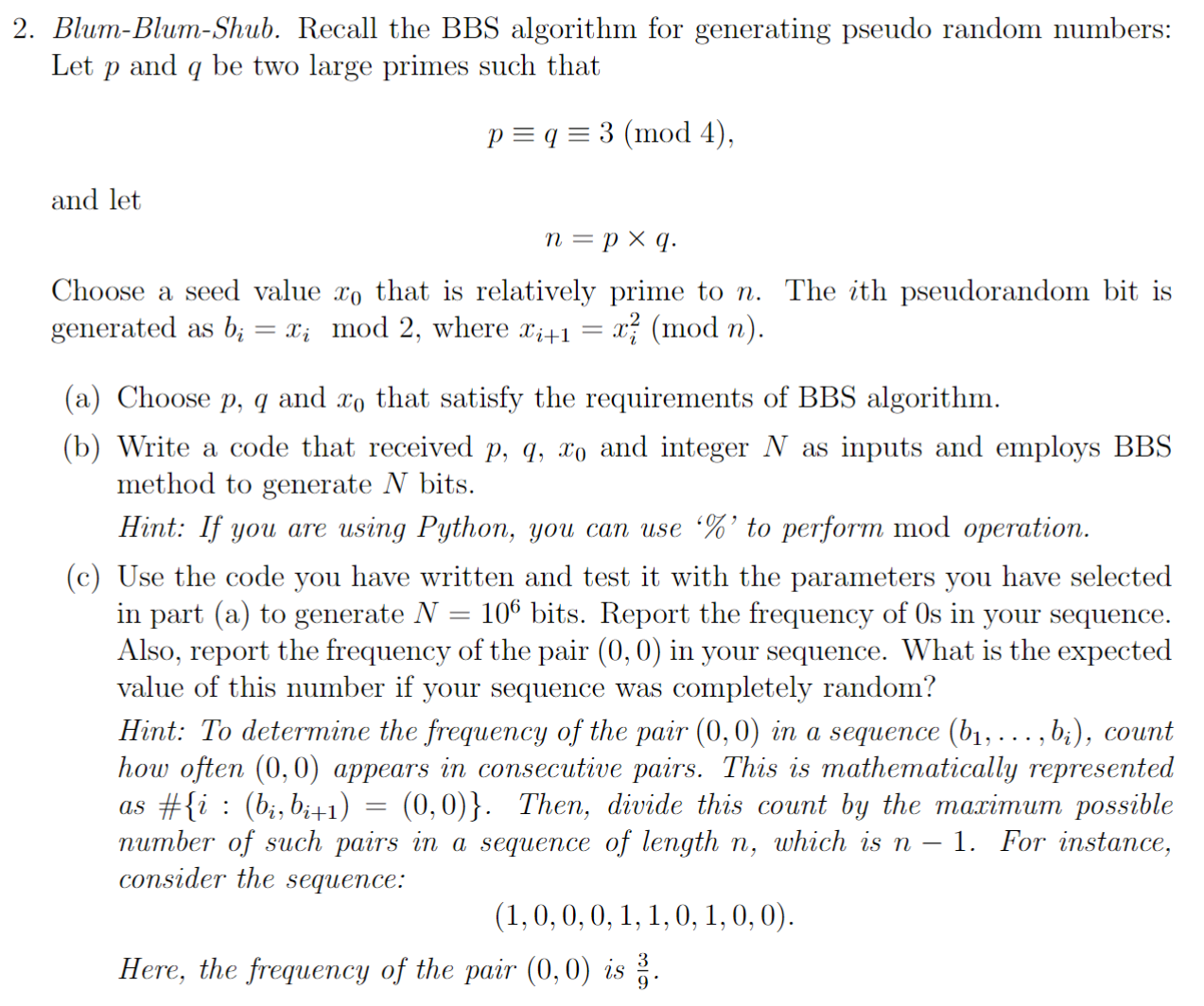Home /
Expert Answers /
Computer Science /
blum-blum-shub-recall-the-bbs-algorithm-for-generating-pseudo-random-numbers-let-p-and-q-be-two-l-pa494
(Solved): Blum-Blum-Shub. Recall the BBS algorithm for generating pseudo random numbers: Let p and q be two l ...

Blum-Blum-Shub. Recall the BBS algorithm for generating pseudo random numbers: Let and be two large primes such that and let Choose a seed value that is relatively prime to . The th pseudorandom bit is generated as , where . (a) Choose and that satisfy the requirements of BBS algorithm. (b) Write a code that received and integer as inputs and employs BBS method to generate bits. Hint: If you are using Python, you can use '\%' to perform mod operation. (c) Use the code you have written and test it with the parameters you have selected in part (a) to generate bits. Report the frequency of 0 s in your sequence. Also, report the frequency of the pair in your sequence. What is the expected value of this number if your sequence was completely random? Hint: To determine the frequency of the pair in a sequence , count how often appears in consecutive pairs. This is mathematically represented as . Then, divide this count by the maximum possible number of such pairs in a sequence of length , which is . For instance, consider the sequence: Here, the frequency of the pair is .